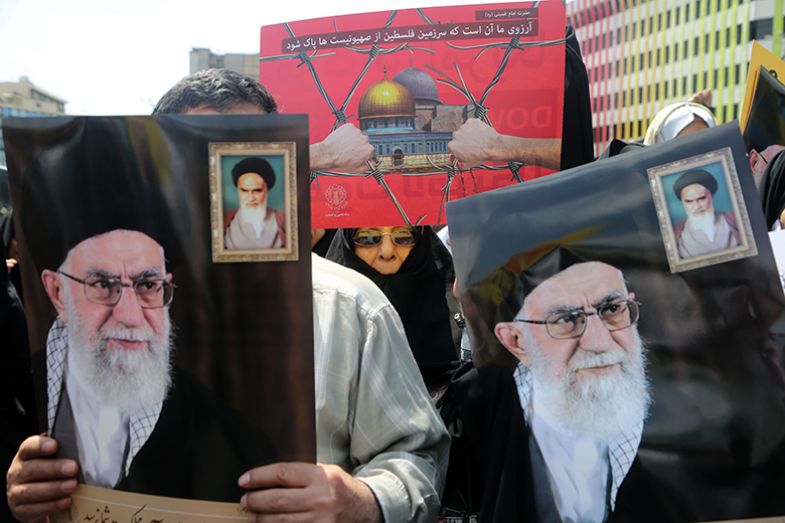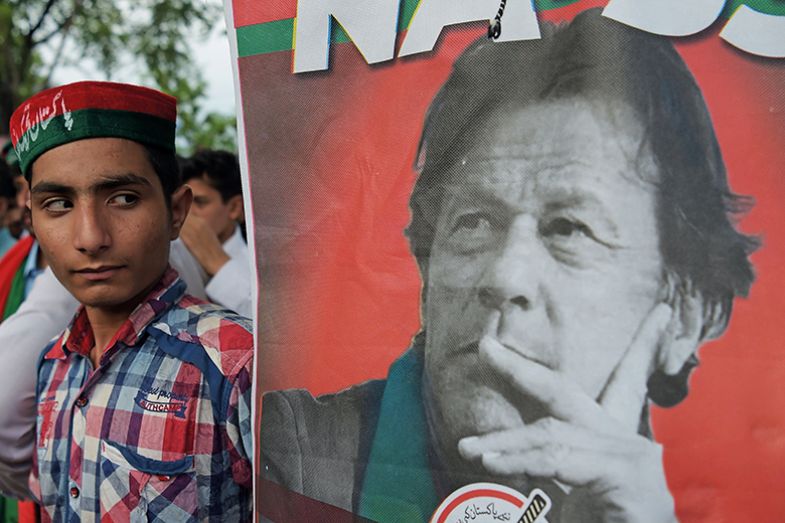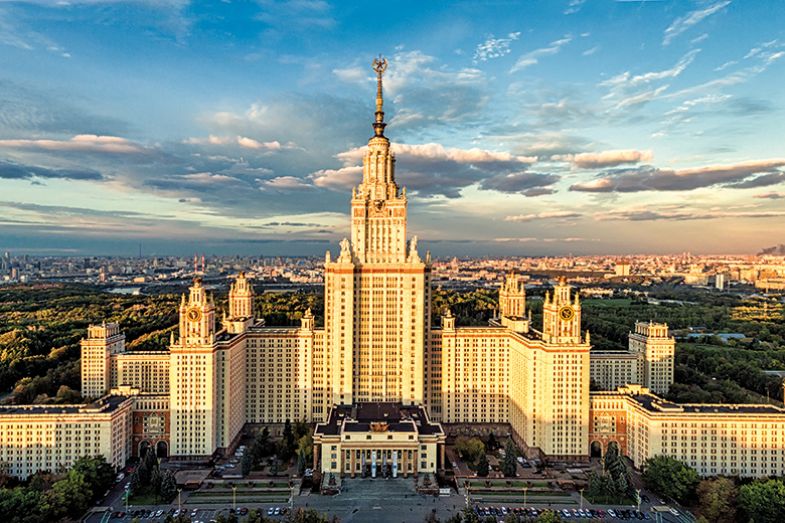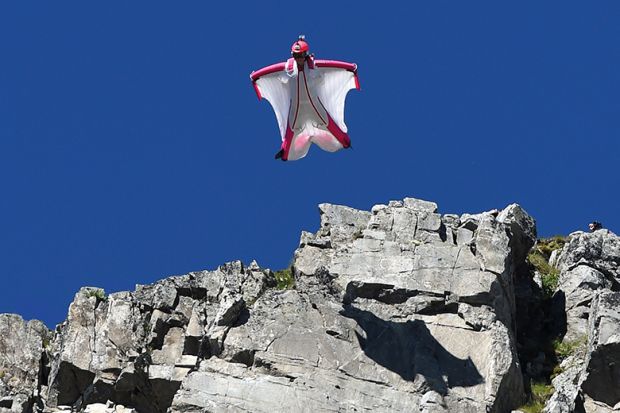Browse the full results of the World University Rankings 2019
Three years ago, the American University of Beirut announced that it was implementing a fundamental change at the institution; after a 30-year hiatus, it said that it would reinstate academic tenure.
Tenure was suspended at the university in 1985 at the height of the Lebanese Civil War, when the institution’s future was threatened after the assassination of president Malcolm Kerr.
A statement from the university said that studies carried out by its Academic Affairs Committee suggested that restoring tenure and the protection of academic freedom that it provides was “highly likely to enhance recruitment and retention of world-class scholars” and enable “transformative, paradigm-shifting research” at the 150-year-old institution.
The decision was even hailed as a “historic day…for liberal thought, and for excellence across the Middle East” by Philip Khoury, chairman of the American University of Beirut’s board of trustees and a scholar of Middle Eastern history at the Massachusetts Institute of Technology, who added that reinstating tenure was the “appropriate and necessary step at this time in order to usher in a new, golden era for this highly impactful university”.
It seems that the decision has already started to pay off; the American University of Beirut has jumped from the 501-600 band to 401-500 in the 2019 Times Higher Education World University Rankings, owing to improvements in its research volume and research impact. The institution also boosted its scores in two of the teaching metrics: staff-to-student ratio and institutional income.
Download a copy of the World University Rankings 2019 digital supplement
Lokman Meho, librarian and associate professor of political studies at the American University of Beirut, credits the reintroduction of tenure as one of the main reasons for the university’s rise, explaining that it provides faculty with job security and an environment that drives high-quality research.
The institution has also recently established a new $650 million (£511 million) capital campaign to fund academic research and academic chairs, expand doctoral programmes and invest in new buildings and technology.
The American University of Beirut is one of several Middle Eastern universities to perform well in this year’s table, reflecting the increasing investment in higher education in many countries that are looking to shift their economies away from a dependence on natural resources.
Two of Egypt’s universities – Mansoura University and Suez Canal University – have jumped from the 801-1,000 band to the 601-800 cohort, despite increasing global competition. Both institutions improved their citation impact this year, while Suez Canal also boosted its industry income and Mansoura received a higher score for international staff. The country has 10 newcomers this year, taking its total number of representatives to 19.
Last year, Egypt’s higher education and scientific research minister, Khaled Abdel-Ghaffar, said that the government was looking to introduce a new law that would make it easier for foreign universities to establish branch campuses in the country, which could boost the nation’s performance in future years.

Meanwhile, Jordan’s front-runner, the Jordan University of Science and Technology, is now in the 351-400 band (up from 401-500) owing to an improvement in its research impact. Jordan now has four universities, up from three last year.
Iran’s Amirkabir University of Technology has also leaped up from 601-800 to 501-600, partly due to receiving higher amounts of research income and achieving a greater citation impact. Iran also has 11 new entries and 29 institutions overall – more than Canada. However, its highest-ranked institution, Babol Noshirvani University of Technology, has declined, slipping one band to 351-400, owing to falls in its teaching environment and technology transfer scores.
Iran moved swiftly to set up higher education collaborations with leading European universities after its landmark nuclear deal and the lifting of sanctions in 2016. And last year THE picked out Iran as one of seven nations that could grow into star players in higher education owing to their growing university participation and increasing research output.
But experts say that the country’s lack of academic freedom, which has led to arrests and the imprisonment of several Iranian dual national scholars on security charges, could prevent its universities from becoming more international.
Saudi Arabia is still home to the top Arab university in the ranking (based on countries in the Arab League), with King Abdulaziz University clinging on to its spot in the 201-250 band. Alfaisal University is now joint second in the region (alongside the United Arab Emirates’ Khalifa University), after impressively jumping from 501-600 to 301-350 owing to a stronger research impact.
The country hopes that these and other universities will improve further in the following years; it is investing $1.6 billion in research and development in the next two years to try to propel five Saudi institutions into the top 100 of international university rankings by 2030.
THE World University Rankings 2019: results announced
Elsewhere in the Gulf region, the United Arab Emirates University has jumped from 501-600 to 351-400 owing to improvements in its citation impact and an increase in its institutional income.
And for the first time in the 15-year history of the rankings, an Iraqi institution makes the list, with the University of Baghdad joining the 801-1,000 band. Its strongest areas include international research collaboration.
Iraq is not the only nation new to the table. Four other countries feature for the first time this year (Kazakhstan, Jamaica, Nepal and Tanzania), while Serbia is back in the table after a one-year hiatus last year. Bangladesh is the only country to fall out of the table as the University of Dhaka did not submit data. Overall, 1,258 universities from 86 countries feature this year.

India is the most-represented country in the table, when nations with representatives in the top 200 are excluded. The South Asian giant claims 49 places this year, up from 42. The Indian Institute of Science holds on to its spot in the 251-300 band, while the Indian Institute of Technology Indore has become its second highest-ranked university, making its debut in the 351-400 band. It overtakes the Indian Institute of Technology Bombay, which slips from 351-400 to 401-500.
Pradeep Mathur, director of IIT Indore, says that the university has always primarily focused on research by investing in research facilities, providing incentives for publications and patents and recruiting committed researchers.
“Our efforts in making research the focus of the institute are now reflected in the form of citation and other impact metrics of research,” he says.
“We continue to make research the focus of all our programmes, which is why you see even our undergraduate students are active participants of research projects and collaborations within India and internationally, too. We are committed to making IIT Indore a top-notch research hub nationally and internationally.”
Indeed, IIT Indore’s strongest areas are research volume and research impact.
Higher education reforms in the country may also help other Indian institutions to rise up the rankings. The government recently named six universities that will become Institutes of Eminence through additional funding and a more relaxed regulatory structure, and has granted 60 universities “autonomous” status, which will allow them to start new courses, set curricula, offer more competitive salaries and establish off-campus centres without requiring approval from the government.
Higher education experts have also predicted that India will become a major recruiter of overseas students, under a new internationalisation strategy that aims to increase the number of foreign students from just 47,000 to 200,000 in the next five years.
Elsewhere in South Asia, Pakistan has nine universities, down from 10 last year. While most have held a stable performance this year, the National University of Sciences and Technology has slipped from 601-800 to 801-1,000 owing to falls in its institutional income and citation impact.
However, like India, Pakistan’s universities may improve in future years after the election of Imran Khan (pictured above) as the country’s new prime minister. Khan says that universities will become more autonomous under his leadership and he has promised to upgrade existing, and establish new, technical universities.

Russia is another country that is intent on improving the performance of its universities. The country has 35 representatives this year, up from 27, but several of these have slipped. Lomonosov Moscow State University, the nation’s flagship, only just clings on to a spot in the top 200, after dropping five places to 199th, owing to falls in its teaching and research reputations and international research collaboration.
Higher School of Economics, a member of Russia’s Project 5-100 excellence initiative, has risen up the table this year, joining the 301-350 band from the 351-400 group. Its teaching reputation, research volume, citation impact and industry income all improved this year, while it also attracted more international students and staff.
Vadim Radaev, the university’s first vice-rector, says that the key challenge for the Higher School of Economics, which was founded in 1992, is “building a robust reputation, both on the domestic market and, most importantly, on the global market”.
He says that the university has been adjusting the academic environment to ensure that there are “favourable conditions for stimulating the faculty’s research productivity, encouraging publications in high-quality journals with high citation indexes [and] attracting the most productive scholars”.
The result is that the annual number of Higher School of Economics publications indexed by Scopus grew 20-fold between 2010 and 2017 and the quality of publications also improved over this time, he says.
Another top priority for the university is internationalisation; the university now has 300 international partners from 50 countries and 37 international laboratories.
“As a young university, the Higher School of Economics doesn’t have long-term strategic ties with international partners carried over from the Soviet times, unlike such prestigious universities as Lomonosov Moscow State University and Saint Petersburg State University. However, the development of English-taught academic programmes, dual-degree programmes, and short induction courses for international students at the Higher School of Economics has brought positive results and stimulated the university’s progress in the global market,” he says.
He adds that over the past five years, the Higher School of Economics has increased the number of international admissions by 150 per cent each year.
The university has also broadened its disciplinary scope to cover mathematics and physics, and is due to open new faculties of biology and chemistry later this year, to sit alongside its original economics faculty.

Meanwhile, in southern Europe, Portugal’s flagship institution – the University of Porto – has risen to join the 401-500 band, up from 501-600, owing to an improved citation impact and an increase in its share of international students.
Porto’s rector, António de Sousa Pereira, says that in recent years the institution has focused more on the quality of research rather than productivity, partly by promoting international research collaboration.
Meanwhile, the rise in Porto’s share of international students is owing to a change in Portuguese law, which means that the university is able to open its undergraduate courses to full-time students for the first time (as opposed to only students from mobility programmes such as Erasmus+ as previously), he says.
Sousa Pereira says that he hopes that these internationalisation efforts will help cement Porto’s place in the “top level of the European higher education system”.
Indeed, internationalisation, alongside funding, is often one of the key ways in which lower-ranked universities in the table can boost their rankings performance. But in many countries these are also the most challenging goals.
Beirut’s Meho cites lack of access to the “same huge funding sources that many universities in the Arab region and the West enjoy” as one of the institution’s main challenges, alongside “lack of financial support from the government”.
The third challenge, he says, is “conflicts in neighbouring countries, which require the university to invest significant resources in order to ensure that it maintains and improves both the levels of diversity it has in terms of international students and faculty and the levels of collaboration with regional and international universities”.
Register to continue
Why register?
- Registration is free and only takes a moment
- Once registered, you can read 3 articles a month
- Sign up for our newsletter
Subscribe
Or subscribe for unlimited access to:
- Unlimited access to news, views, insights & reviews
- Digital editions
- Digital access to THE’s university and college rankings analysis
Already registered or a current subscriber? Login








